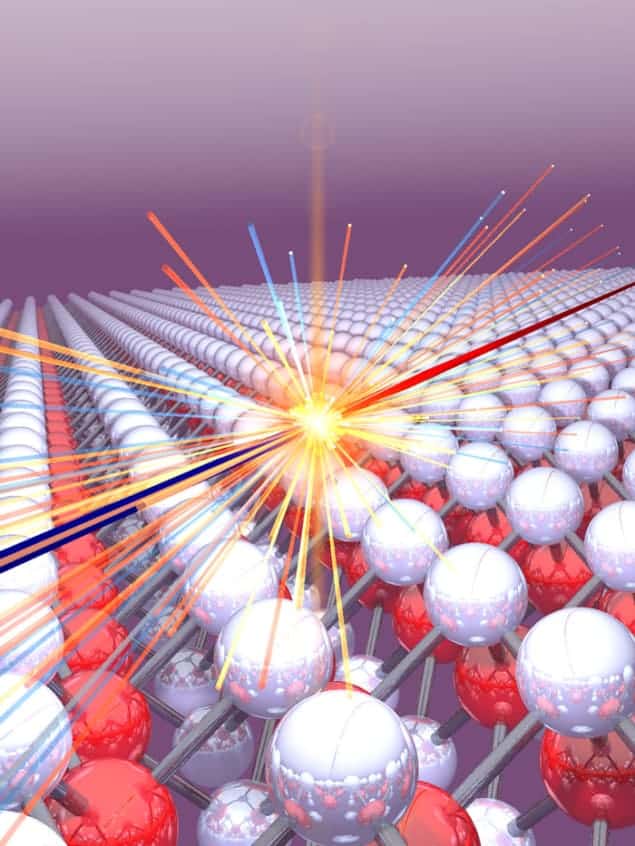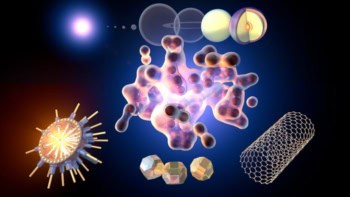
The first controlled collisions of quasiparticles within a solid have been achieved by an international group of physicists. By firing a laser pulse at a semiconductor, the group created “excitons” – electron–hole pairs bound to each other via electrostatic attraction. This new experimental technique could resolve the dynamics of the collision to about two femtoseconds. The researchers say that, apart from improving our understanding of the fundamental physics of excitons, the technique opens the door to studying the fast dynamics of quasiparticle interactions in solids. It could even be used to design semiconductor devices in the future.
Quasiparticles such as the exciton are configurations of particles that have distinctive collective behaviour. It’s analogous to a bubble in water, says Mackillo Kira at Philipps-Universität Marburg in Germany. When describing bubble behaviour, it’s easier to treat the bubble as a single particle “rather than considering all of the water molecules at once”, he says. Similarly, quasiparticles are a more illuminating way of studying the bulk behaviour of semiconductors and other solids compared with individual electrons. Quasiparticle interactions are often used to explain material properties such as resistivity, heat capacity and superconductivity.
Dynamical collisions
In the past, physicists have used spectroscopy to study quasiparticle structure, but this group is the first to observe quasiparticle dynamics in time. To create the excitons, the researchers fired a 10 fs optical laser pulse at a sample of tungsten diselenide. This pulse excited an electron from the valence band into the conduction band, leaving a positively charged hole in its place. The resulting electron–hole pair constitutes an exciton. The team then used a 23 THz sinusoidal laser pulse to collide the electron with its hole. Indeed, this is done by precisely tuning the timing of the second laser pulse, such that the electron and hole are stretched apart, before being accelerated toward one another in a collision. The electron and hole annihilate in the collision and emit a high-energy photon.
The team could observe the process of exciton creation, acceleration and annihilation to 2 fs resolution by detecting the frequency, intensity and direction of the emitted light. Kira told physicsworld.com that this high resolution is possible because of the shortness of the pulses and the precision with which they can be controlled. In particular, the first 10 fs optical pulse that creates the excitons is much shorter than the 50 fs oscillation period of the THz laser pulse. This means that the researchers could create excitons quickly enough to manipulate and collide them using the second laser pulse.
Precision timing
However, the biggest technical challenge was precisely timing the delay between the two laser pulses over many measurements, according to Kira. Because the light emitted in the collisions would be different depending on when the second laser pulse was fired, to achieve the 2 fs resolution, the researchers needed to replicate the timing in each collision precisely. To fully describe the collisions, the team turned to quantum mechanical principles. “When quasiparticles collide, they are not classical objects and also have aspects of waves,” says Kira. The wave-like nature of the excitons resulted in quantum mechanical behaviour such as interference patterns.
Using controlled collisions to study quasiparticles is a novel idea, says Dirk van der Marel at the University of Geneva, who was not involved in the research. The technique could be adapted to study the dynamics of more complex quasiparticles such as polarons or vortices in superconductors, he says. The level of control is “exciting”, says van der Marel, adding, “I’m sure that many people will follow this and try to do it themselves.”
The work is published in Nature.



